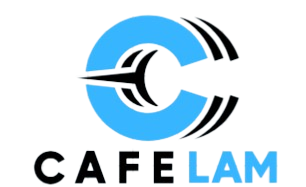In today’s digital landscape, evaluating the effectiveness of communication platforms like Zoom is crucial for businesses and individuals alike. Understanding the success metrics for Zoom enables users to optimize their experience and achieve desired outcomes. This article delves into key performance indicators (KPIs) that gauge success metrics for zoom, offering insights into user engagement, technical performance, and overall satisfaction.
Understanding Success Metrics for Zoom
Success metrics are quantifiable measures that assess the performance and effectiveness of a platform. For Zoom, these metrics encompass user growth, engagement levels, technical reliability, and financial performance. By analyzing these indicators, stakeholders can make informed decisions to enhance user experience and drive platform improvements.
Key Success Metrics for Zoom
User Growth Metrics
Active User Growth: Monitoring the increase in active users over time reflects Zoom’s market penetration and adoption rates. A consistent rise indicates successful user acquisition strategies.
New User Acquisition: Tracking the number of new users joining the platform provides insights into the effectiveness of marketing and outreach efforts. High acquisition rates suggest strong brand appeal and outreach success.
Engagement Metrics
Average Meeting Duration: Analyzing the typical length of meetings can reveal user engagement levels. Longer durations may indicate productive sessions, while shorter ones could suggest quick check-ins or potential disengagement.
Frequency of Use: Assessing how often users host or join meetings helps determine the platform’s integration into daily workflows. High frequency signifies reliance on Zoom for communication needs.
Technical Performance Metrics
Call Quality Indicators: Metrics such as latency, jitter, and packet loss are vital for evaluating the technical performance of Zoom calls. Optimal values in these areas ensure a seamless communication experience.
System Uptime: Maintaining high system uptime is crucial for user trust and reliability. Downtime can lead to user dissatisfaction and potential loss of business.
Customer Satisfaction Metrics
Customer Satisfaction Score (CSAT): This metric gauges user satisfaction through surveys, typically asking users to rate their experience on a scale. High CSAT scores reflect positive user experiences and effective platform performance.
Net Promoter Score (NPS): NPS measures user loyalty by asking how likely they are to recommend Zoom to others. A high NPS indicates strong user endorsement and satisfaction.
Financial Performance Metrics
Average Revenue Per User (ARPU): Calculating the revenue generated per user helps assess the platform’s financial health and pricing strategy effectiveness. An increasing ARPU suggests successful upselling or premium feature adoption.
Monthly Recurring Revenue (MRR): MRR tracks the predictable revenue earned monthly, providing insights into financial stability and growth. Consistent MRR growth indicates a healthy subscription model.
Comparison of Key Success Metrics for Zoom
The following chart compares various success metrics for Zoom, highlighting their significance and the insights they provide:
| Metric | Description | Significance |
|---|---|---|
| Active User Growth | Measures the increase in active users over time. | Indicates market penetration and user adoption rates. |
| New User Acquisition | Tracks the number of new users joining the platform. | Reflects the effectiveness of marketing and outreach efforts. |
| Average Meeting Duration | Analyzes the typical length of meetings. | Provides insights into user engagement and meeting productivity. |
| Frequency of Use | Assesses how often users host or join meetings. | Determines the platform’s integration into daily workflows. |
| Call Quality Indicators | Evaluates technical performance through metrics like latency and jitter. | Ensures a seamless communication experience for users. |
| System Uptime | Measures the availability and reliability of the platform. | High uptime is crucial for maintaining user trust and satisfaction. |
| Customer Satisfaction Score | Gauges user satisfaction through survey ratings. | High scores reflect positive user experiences and platform effectiveness. |
| Net Promoter Score | Measures user loyalty based on their likelihood to recommend the platform. | A high NPS indicates strong user endorsement and satisfaction. |
| Average Revenue Per User | Calculates the revenue generated per user. | Assesses financial health and the effectiveness of pricing strategies. |
| Monthly Recurring Revenue | Tracks predictable monthly revenue. | Provides insights into financial stability and subscription model success. |
Enhancing Success Metrics for Zoom
To improve these metrics, consider the following strategies:
- User Experience Optimization: Continuously refine the user interface to enhance usability and accessibility, encouraging increased engagement and satisfaction.
- Feature Expansion: Introduce new features that address user needs and preferences, fostering higher adoption rates and potential revenue growth.
- Technical Infrastructure Investment: Allocate resources to maintain and upgrade technical infrastructure, ensuring high call quality and system reliability.
- Customer Feedback Integration: Actively seek and incorporate user feedback to make informed improvements, directly impacting satisfaction and loyalty metrics.
Conclusion
Understanding and monitoring success metrics for Zoom is essential for evaluating its performance and identifying areas for enhancement. By focusing on user growth, engagement, technical performance, customer satisfaction, and financial health, stakeholders can make data-driven decisions to ensure Zoom’s continued success in the competitive digital communication landscape.







